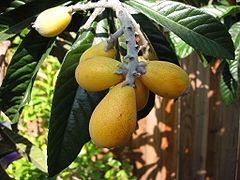
image from Cartoonstock, and I want it on a T-shirt!
Been re-testing my IMO recipes lately—that's Indigenous Mico-Organisms, also known as Beneficial Indigenous Microbes or BIM, and searched for most often on this blog by folks searching for a wholly non-retail solution.
In other words, EM you don't have to buy every so often. Or ever.
Not all IMO is EM, but by definition, all EM is IMO; the formulation of retail EM differs by region or country. If you live in an area with glorious, gorgeous, healthy “plant a seed and stand back” soil, you probably have all the IMO you need for everyday purposes. Maybe a little extra dose of rhodobacter(s) if you wanted to process manures, or for indoor fermentation, but otherwise, at least for outdoor composting & gardening, you're set.
I do not live in such an area, and even if my part of Austin were as lush as virgin, unpolluted rainforest, my soil comes in bags from the store and spends its useful life in plastic planters, aka buckets, wholly divorced from the soilweb. So I need microbes. EM bokashi bran suits my situation well, and buying a bottle of EM-1 every year, plus molasses and wheat bran (and scrounging/buying assorted other possible carriers) is still cheaper than buying decent quality bagged compost from the garden center. I've even been known to spring for the packaged EM bokashi bran*, though it really doesn't take much longer to mix a baby batch of bran than to log on to an e-tailer site and place an order.
So if I'm happy with the retail model, why do I play with IMO? The same reason I'm still playing with this blog-project—there aren't enough answers out there yet! Bokashi is still relatively new, and it's the retailers who are driving such limited education as exists. Some of those retailers...well.
I've had several very positive interactions with bokashi-product-related retailers. I've also run across some who would have kept me from ever trying bokashi had I been unlucky enough to encounter them first. (Naming no names, I shall say only that “if you don't have a house, bokashi is not for you” is not a helpful message, and “composting equals polluting” isn't exactly the right approach, either.)
But worse than retailer-roulette is the idea of no retailers at all. My local Whole Foods used to carry EM-1 in the floral department; no longer. Austin has a local bokashi producer now, but the company's summer hiatus can be a problem—and what about all those places without a local source? Also, yes, okay, there's the fact that I could buy more seeds or starts with that EM $$.
So sometimes I play with IMO recipes. [I promise, those posts are coming.] Checking on one my tests at some impossibly early hour of the morning when the sun wasn't even up yet, I caught myself muttering to remind myself of what I was doing, and even to my ears it sounded a whole lot like some fairy tale witch's shopping list.
Piloncillo, kombucha, vermicompost, coir, lactobacillus serum, acetobacter, SCOBY and PNSB--these aren't words normal people toss around before the first cup of coffee!
But it's years too late to worry about what that longago president used to refer to as normalcy. I'll be happy with verdant--and yummy. And a short-term foliar application of my AIM** just successfully resurrected a drought-crisped potted herb, so verdant and yummy is very much the order of the day.
Happy brewing!
DSF
*someone remind me to buy a second bag of the bran that got recalled, so I can finally post those results. Kthnx
**light mist, all over the plant's crisy-toasty leaves (hey, to all appearances they were dead anyhow), let sit about fifteen minutes and followed with a slightly heavier mist of water. And a camera wouldn't have helped this time, since it would never have occurred to me to take a picture of a dead herb, but I might have to stage a recreation, just for the before-and-after WOW!








